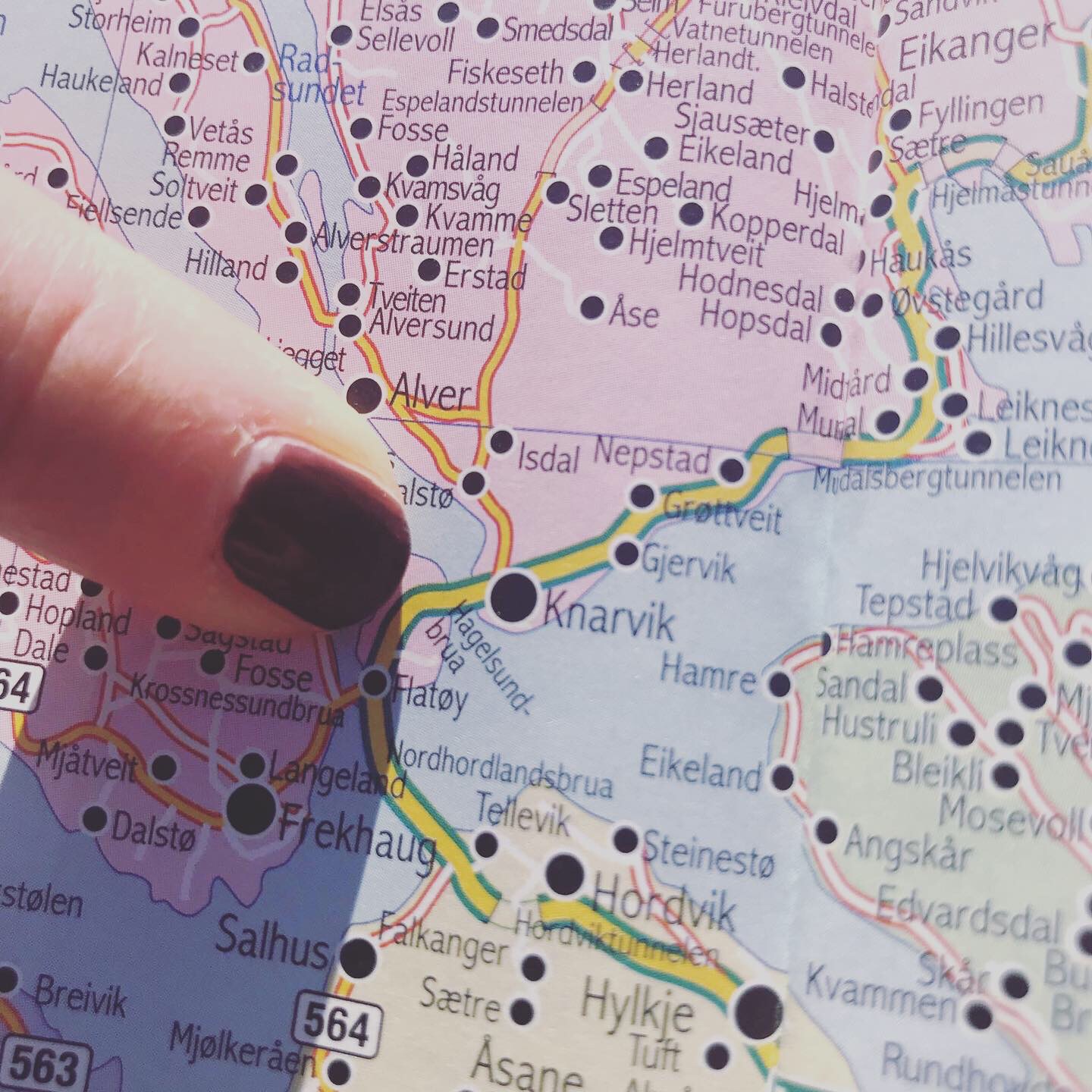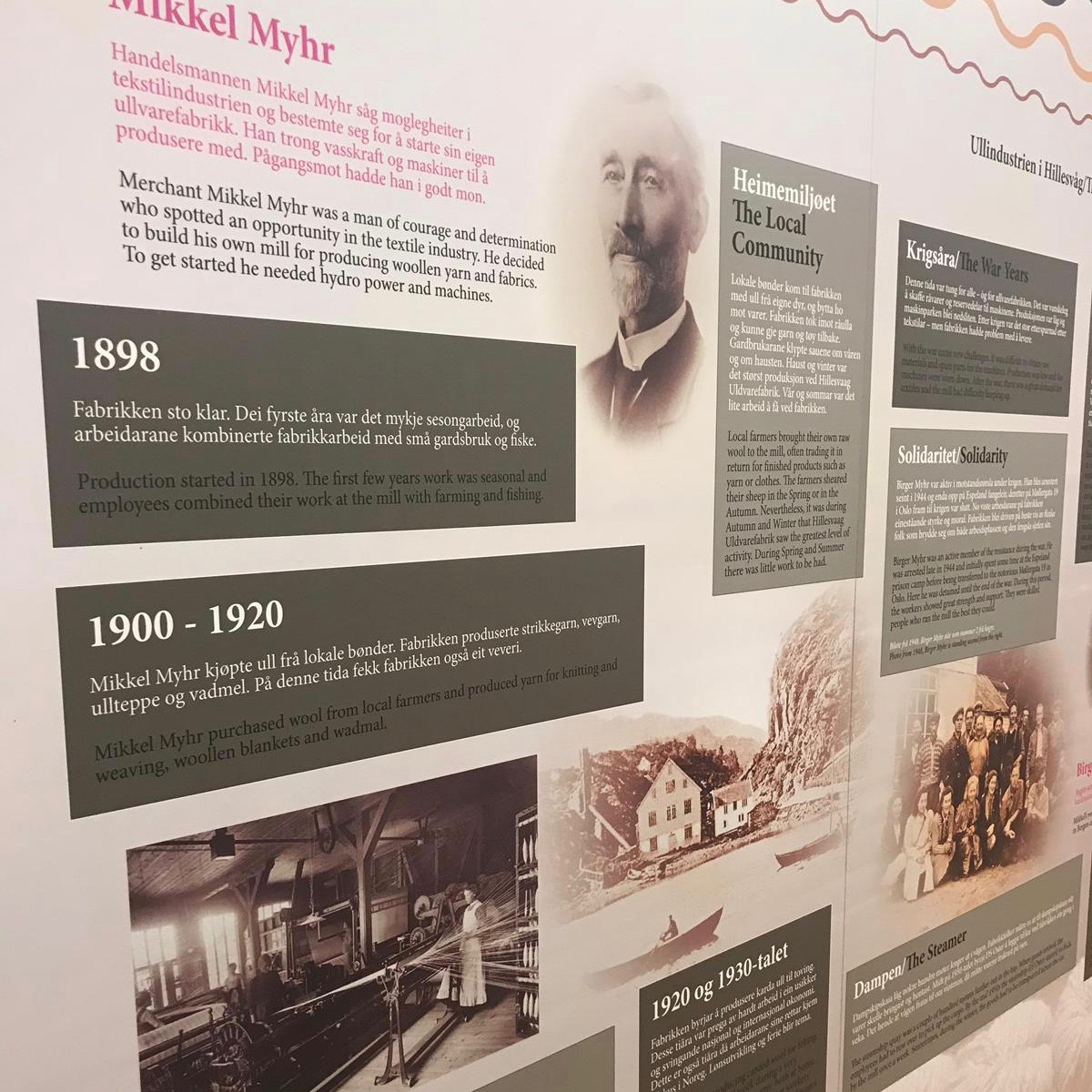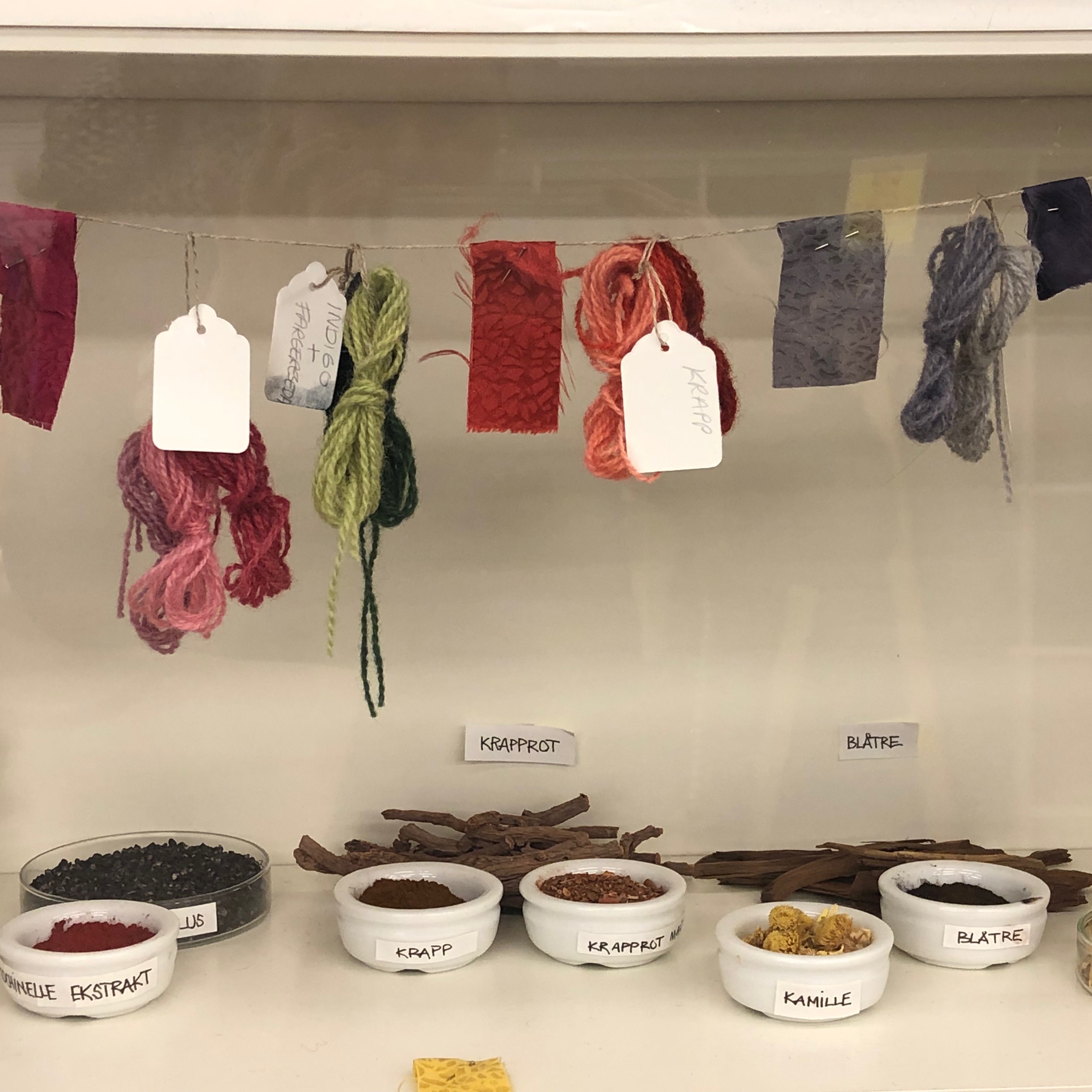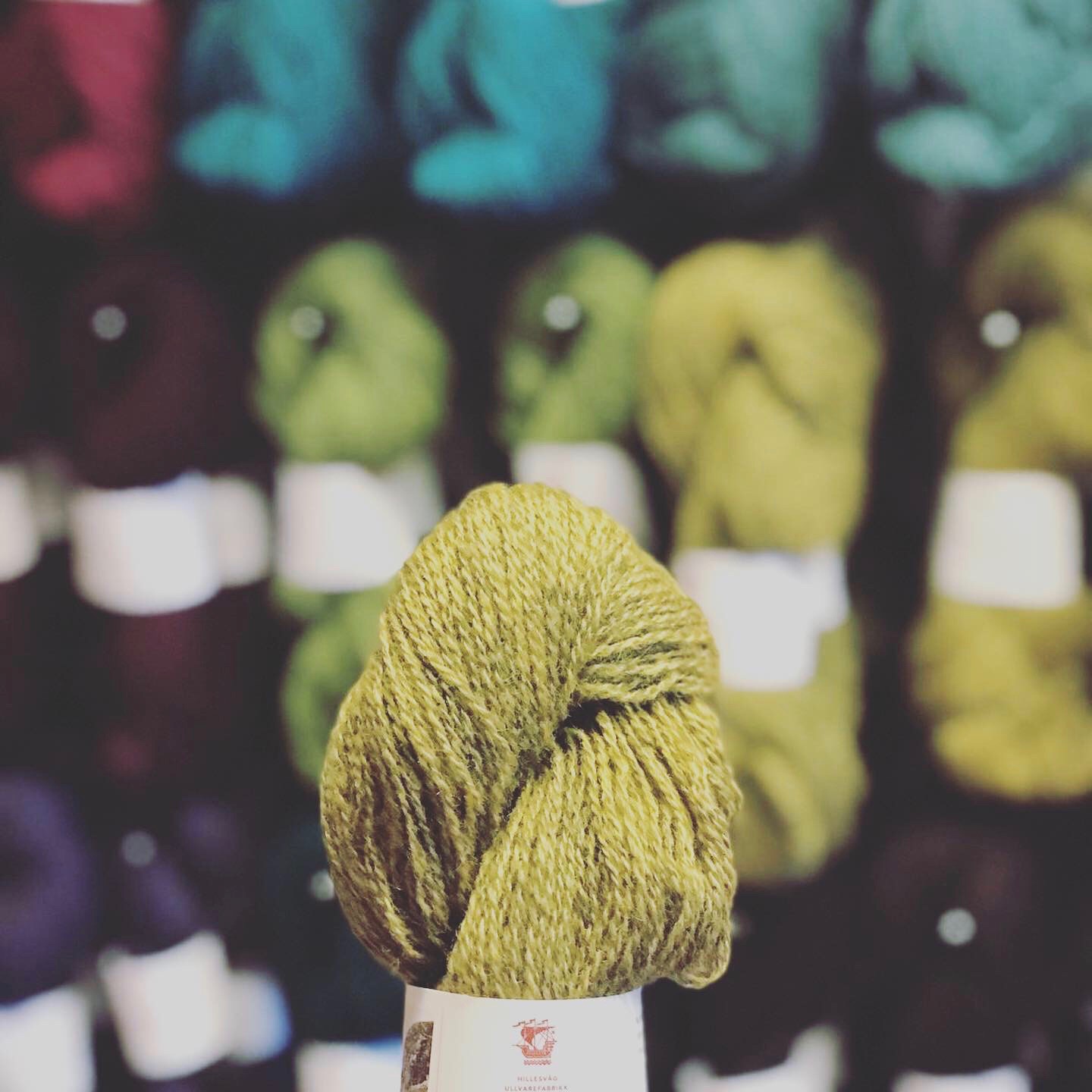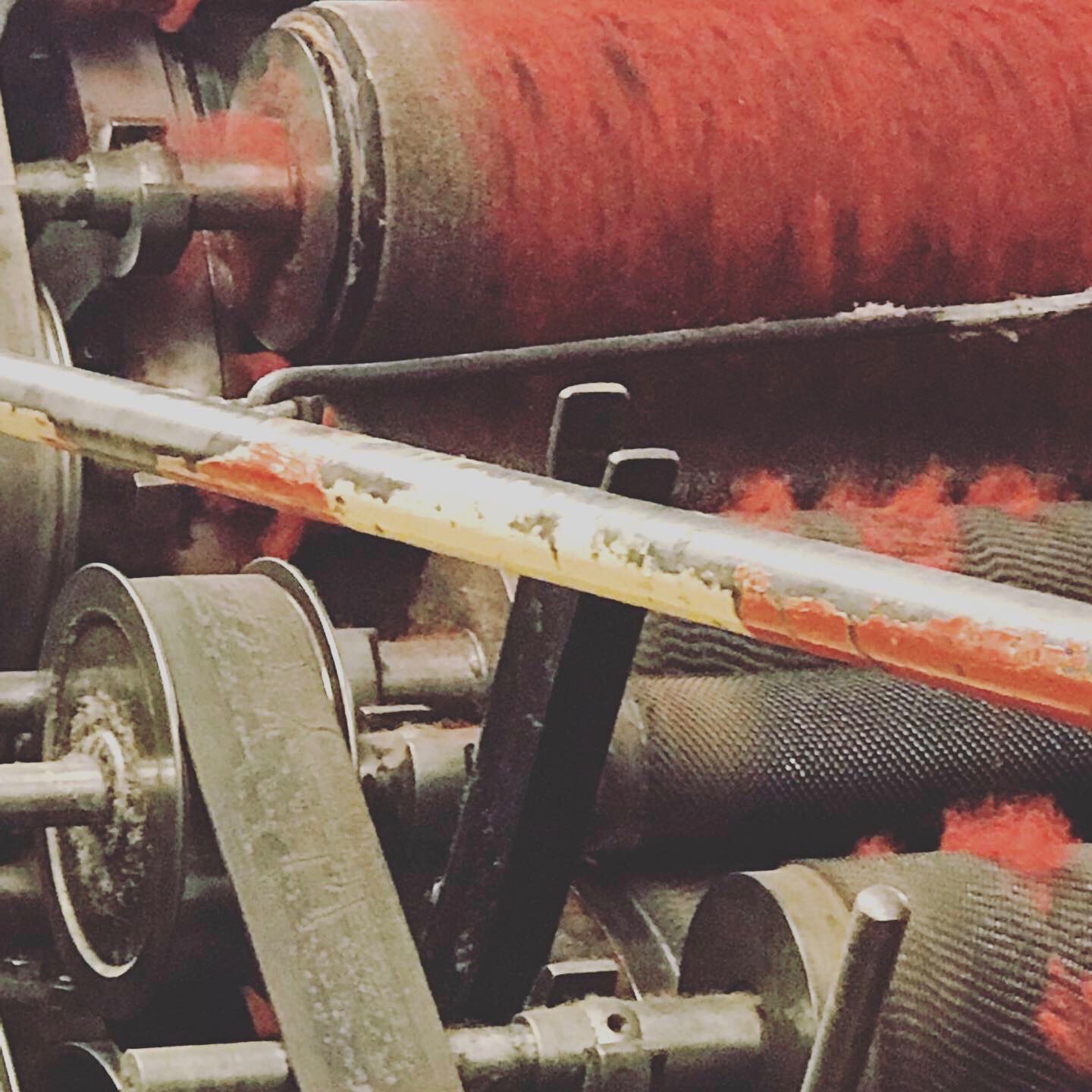
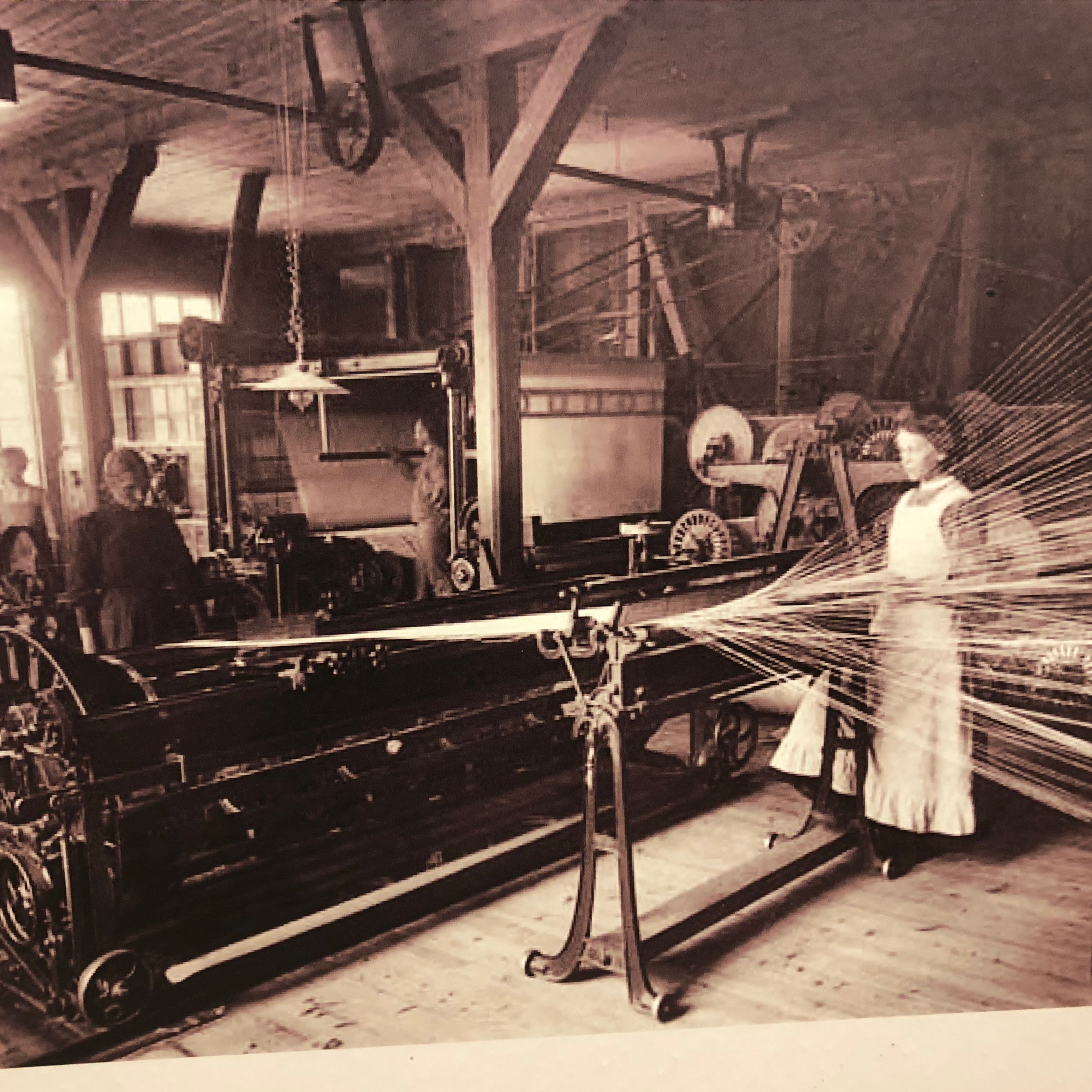
Hillesvåg wool factory
It’s Monday, 23 September, a sunny day, and we’re on our way from Os, via Bergen, to Knarvik. The views on the way to Knarvik take my breath away. It’s my first trip to this region. Kari’s been here before, and tells me about the things we see, and about when she was here. A lot of childhood memories, of course. It’s nice that I can now link her memories to this beautiful part of Norway.
After an hour’s drive, we arrive at the ‘Ullvarefabrikk’. We both go quiet when we drive onto the parking lot. We are so impressed by what we see: a 121-year-old wool product factory. Over the years, the factory has been expanded and rebuilt in line with changes in time and trends. But it still has the characteristics of a century-old factory. This location has all the elements needed for the production of wool and yarn. Production that is still being done today with the help of a machine park that, for the most part, has been in use for decades.
We take a look around and see how the wool was transported over the water for decades. The quay where they moored is still there. Sheep farmers from all over the region brought the wool to the factory with their rowing boats.
The factory was founded in 1898 by Mikkel Myhr. He was a brave and determined man. He saw opportunities in the textile trade and started his own wool factory. Nowadays, the fifth generation ensures that the same work is still done at this location. Each year, the factory produces a large quantity of carded wool and yarn from different breeds of sheep that graze on Norwegian fields.
It is hard to refrain from telling you about every detail of our visit, but if I did that, this would be a very long read. So, I’ll keep it brief. The entrance to the store is on the side of the factory. As soon as you enter, you get the feeling that you have travelled back in time. It’s old, but very well-kept and definitely not worn. Traditional and warm is a better description. Everything here is done with zeal and pride. You see it, and you feel it too. This is where Margunn buys the wool for her wrist warmers, hats, scarves and more. I see woollen clothing, accessories, buttons, knitting needles, and clothing patterns.
A small staircase takes you to the factory. Part of it is open to visitors. The visitor’s eye is immediately drawn to the information and picture wall, displaying the factory’s history over the years. We walk along the wall and absorb the rich history of this factory. The stories tell us about how the farmers used to bring their raw wool in exchange for yarn or woollen clothing. On the other side of the room, there’s an old wool carding machine. The carding removes the last bits of dirt, making the wool ready to be spun. Every year, this company produces a large amount of carded wool and yarn from sheep that graze on Norwegian fields. Most of the production at Hillesvåg Ullvarefabrikk is made from Norwegian wool from different breeds of sheep.
One special moment on this trip was seeing an older man lugging boxes. It’s special, because I noticed a picture of him on the wall, and he is well past 70.
We look around some more, buy a sock pattern in the store, and leave the factory after about an hour or so. The sun is still shining, and we drive back towards Bergen, enjoying the warm weather, impressed by what we have seen.
